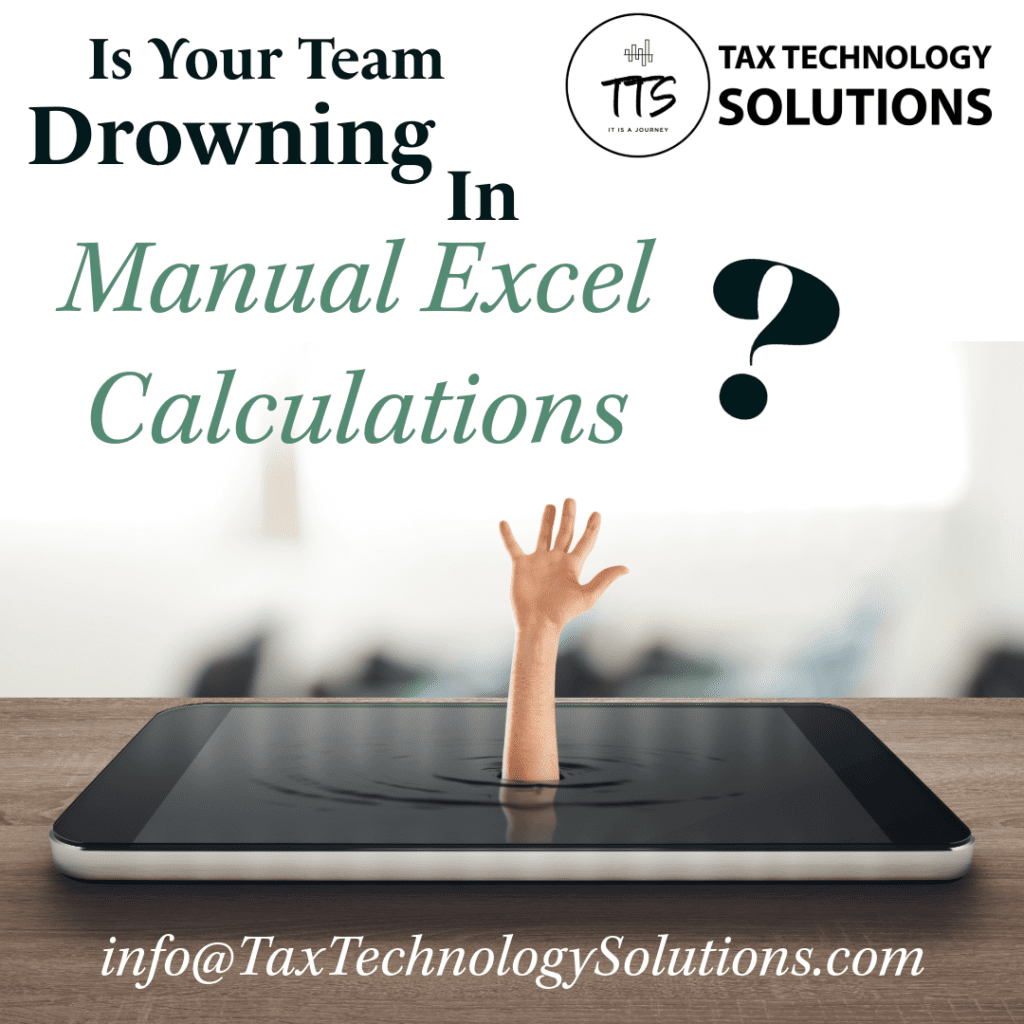
Why is Corporate Tax Drowning in Manual Excel Reports?
Corporate tax departments frequently encounter numerous obstacles when integrating technology and automation. This is particularly true when it comes to automating manual Excel processes. Below are some primary reasons and effective solutions that will help to gradually transition into Excel-based automated solutions that have been proven to significantly reduce cost and improve efficiency.
| Challenges | Recommendations |
|---|---|
| Process Complexity: Tax regulations are complex and frequently changing, requiring customized solutions that can be difficult to automate. Each company may have unique tax scenarios that standard software solutions can’t easily address. | Tax is undeniably complex, but that doesn’t mean its challenges can’t be automated. Complex issues require tailored solutions, such as those provided by Tax Technology Solutions LLC. Remember, automation is like an engine—it requires regular maintenance to perform at its best. This is another area where Tax Technology Solutions LLC stands out, consistently surpassing the competition. |
| Resource Constraints: Implementing new technology requires significant resources, including time, money, and skilled personnel. Many tax departments are already stretched thin, making it hard to allocate resources to new projects. | Many tax departments are so inundated with work that the idea of taking on a new project, even one that promises to reduce their workload in the future, is unappealing. Additionally, many tax department leaders are wary of new technology. Those who are open to automation often consult with large accounting firms, which tend to charge exorbitant fees—sometimes hundreds of thousands of dollars for even the simplest projects—making automation financially unfeasible for many. Tax Technology is now a well-established field, no longer confined to the big accounting firms. Many smaller, highly capable Tax IT service providers, such as Tax Technology Solutions LLC, excel in project management, design, and implementation of customized solutions, requiring minimal time investment from clients. |
| Legacy Systems: Many corporate tax departments rely on legacy systems that are not easily integrated with new technologies. Transitioning from these systems can be a daunting and risky process. | Automating legacy systems can be challenging. However, most of the legacy systems that tax departments depend on are not directly managed by tax. Instead, it is the data within these systems that corporate tax needs. Fortunately, there’s a straightforward solution to this issue. To fully leverage automation, tax departments should begin with an automation roadmap that targets automating at least 50% of the time-consuming manual tasks. The first step in this plan is to implement a centralized Tax Data Warehouse, which can automatically collect financial data from various sources, including legacy systems. Tax Technology Solutions LLC offers customized tax portals with dedicated Tax Data Warehouses tailored to each client’s specific needs and budget. TTS’ tax portals can be easily used to collect legacy system data and fully automate the process. |
| Justifying ROI: Demonstrating a meaningful return on investment (ROI) for tax technology projects can be challenging. The benefits of automation, such as increased efficiency and reduced errors, may not be immediately apparent or easily quantifiable. | To achieve the best ROI, it’s crucial to select the right tasks for automation. This begins with gathering some basic facts (who, where, when, and why) to make sure we focus on the real problem. Then, calculating the ROI becomes much simpler. To save both time and money, always ensure your projects are grounded in data and thorough planning, rather than relying solely on intuition or gut feelings. |
| Change Management: Resistance to change is a common issue in many organizations. Tax professionals may be accustomed to traditional methods and skeptical about the reliability and effectiveness of new technologies. | Implementing change in a busy tax department can be challenging for several reasons: Job Insecurity: Many tax professionals resist change due to fears of job loss. Loss of Recognition: Those proficient in spreadsheets and known for their expertise with complex Excel formulas may be particularly resistant, as automated processes simplify these tasks for everyone. Lack of Tax Leadership Support: Without the Head of Tax’s support, even the best automation solutions are unlikely to succeed. To tackle these challenges effectively, it’s essential to secure the support of tax leaders at all levels. Additionally, the goals of the new automation project should be clearly communicated to all affected parties before the project begins. |